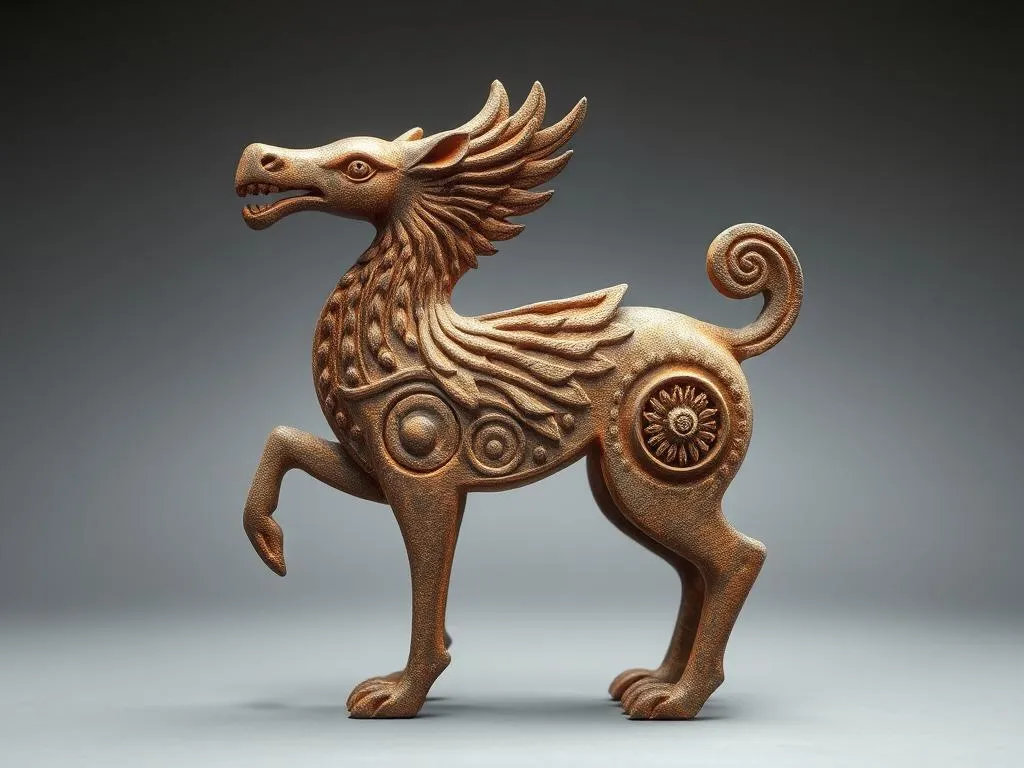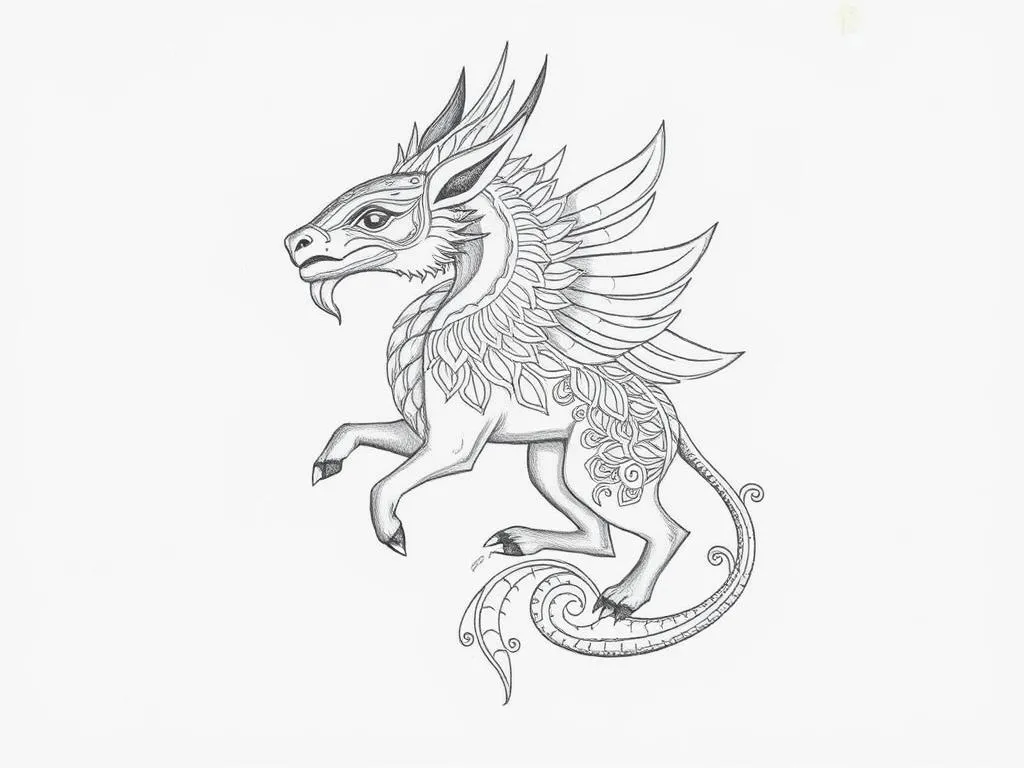The Enigmatic Symbolism of the Javanese Tiger

Disclaimer: Some images on this website are AI-generated artworks and may not accurately represent real animals.
The Javanese tiger holds a significant place in the cultural landscape of Indonesia, particularly on the island of Java. This majestic creature embodies a rich tapestry of symbolism and meaning that resonates deeply within Javanese society. From ancient mythology to contemporary interpretations, the Javanese tiger represents strength, guardianship, and a duality that speaks to both power and fragility. In this exploration, we delve into the various dimensions of the Javanese tiger, highlighting its historical significance, physical characteristics, and profound symbolism.
Understanding the Javanese Tiger
Historical Significance in Javanese Culture
The Javanese tiger was not merely an animal in the dense forests of Java; it was a pivotal figure in mythology and folklore. Stories passed down through generations depict the tiger as a powerful spirit that protected the land and its people. In these narratives, the tiger often appears as a guardian figure, embodying the qualities of valor and ferocity.
In Javanese society, the tiger symbolizes strength and power. Warriors and leaders would invoke the spirit of the tiger to inspire courage and resilience. The presence of the tiger in folklore served as a reminder of the potential for greatness that resides in every individual.
Physical Characteristics
The Javanese tiger possessed a unique set of physical traits that set it apart from its counterparts in other regions. Below is a table summarizing its notable characteristics:
| Characteristic | Description |
|---|---|
| Size | Smaller than other tiger subspecies |
| Fur | Distinctive orange coat with black stripes |
| Build | Sleek and agile, ideal for dense forest hunting |
| Adaptations | Camouflaged fur for stealth in lush environments |
| Behavior | Solitary and territorial, showcasing independence |
The adaptations of the Javanese tiger allowed it to thrive in the diverse environments of Java, from mountains to lowland forests. Its physical prowess and agility made it a formidable predator, while its striking appearance captured the imagination of the Javanese people.

Symbolism & Spiritual Meaning
The Tiger as a Protector
In Javanese culture, the tiger is often associated with guardianship and protection. It is believed that the spirit of the tiger watches over the land, safeguarding the community from harm. This association extends to personal protection, where individuals invoke the tiger’s spirit in times of trouble, seeking its strength and courage to face adversity.
The tiger’s ferocity and bravery are qualities that Javanese people admire and strive to embody. In times of conflict or uncertainty, the symbolism of the tiger serves as a powerful reminder of the resilience required to overcome challenges.
Duality of Strength and Vulnerability
The symbolism of the Javanese tiger also encapsulates a profound duality of strength and vulnerability. While the tiger represents power and dominance in the animal kingdom, it is also an endangered species, facing threats from habitat loss and poaching. This contrast serves as a poignant lesson about the fragility of nature and the responsibility humans bear in preserving it.
This duality encourages respect for the tiger and the ecosystems it inhabits. The endangered status of the Javanese tiger highlights the urgent need for conservation efforts, reminding society that strength must be coupled with empathy and stewardship.
Cultural Representations
The tiger’s influence permeates Javanese art, dance, and literature. Artists often incorporate tiger motifs into their works, symbolizing bravery and cultural pride. Traditional dances may feature tiger representations, showcasing the creature’s power and mystique to audiences.
In ceremonial practices, the tiger’s presence is felt as well. Rituals invoking the tiger spirit aim to harness its protective qualities, ensuring prosperity and harmony within the community. These cultural representations reinforce the tiger’s role as a central figure in Javanese identity.
The Javanese Tiger in Dreams
Interpretation of Tiger Dreams
Dreams featuring the Javanese tiger can carry deep meanings, often tied to personal experiences and emotions. Below is a table of common themes associated with dreaming of tigers:
| Dream Theme | Interpretation |
|---|---|
| Encountering a tiger | Confronting personal fears or challenges |
| Being chased | Feeling overwhelmed or threatened in waking life |
| Taming a tiger | Gaining control over one’s instincts and emotions |
| Observing a tiger | Reflecting on personal strength and power |
Dreaming of a tiger can signify a journey through one’s subconscious, often prompting introspection about personal capabilities and anxieties. Whether the tiger represents a challenge or a source of strength, its presence in dreams invites the dreamer to explore these themes further.
Personal Transformation and Growth
The symbolism of the tiger extends to personal transformation and growth. Encountering a tiger in a dream may serve as a catalyst for change, encouraging individuals to embrace their inner strength and confront their fears. The tiger, with its wild and untamed nature, symbolizes the wild side that we often suppress.
By recognizing the tiger’s traits, individuals may feel inspired to embark on a journey of self-discovery and personal empowerment. The tiger urges us to acknowledge our vulnerabilities while harnessing our inherent strength.
Modern Interpretations
The Javanese Tiger in Contemporary Culture
In contemporary Indonesia, the Javanese tiger continues to play a significant role in storytelling and art. Modern artists draw inspiration from the tiger’s majestic qualities, creating works that celebrate its legacy. Literature and film also feature the tiger as a central character, representing both the beauty and the fragility of nature.
The tiger’s representation in popular media has shifted public perception, fostering a greater appreciation for wildlife and the environment. This modern portrayal encourages discussions about conservation and the importance of protecting endangered species.
Conservation and Environmentalism
Current threats to the Javanese tiger are alarming, with habitat destruction and poaching leading to its near extinction. The plight of the tiger serves as a call to action for conservation efforts, emphasizing the interconnectedness of all living beings.
Modern interpretations of the tiger’s symbolism can inspire individuals and communities to engage in environmentalism. By understanding the importance of preserving the tiger’s habitat, society can advocate for policies that protect not only the tiger but the entire ecosystem.
Key Takeaways
- The Javanese tiger symbolizes strength, power, and guardianship within Javanese culture.
- Its duality highlights the balance between ferocity and vulnerability, serving as a lesson in conservation.
- Cultural representations in art, dance, and literature reinforce the tiger’s significance in Javanese identity.
- Dreaming of tigers can indicate personal challenges and transformations, prompting introspection and growth.
- Contemporary portrayals of the tiger foster appreciation for wildlife, emphasizing the need for conservation efforts.
Conclusion
The enduring power of the Javanese tiger as a symbol of strength, protection, and ecological responsibility is a testament to its significance in both historical and contemporary contexts. As we reflect on the lessons the tiger imparts, we are encouraged to embrace its traits of bravery and resilience. By fostering a deep respect for nature and committing to conservation efforts, we can honor the legacy of the Javanese tiger and ensure its place in the cultural fabric of Indonesia for generations to come.







